Visiting Torres del Paine National Park- A First Time Visitor’s Guide to Torres del Paine
Purchases made through links earn us a small commission, at no extra cost to you.
Torres del Paine National Park is one of Chile’s most stunning natural areas. With distinctive mountains, brilliant turquoise lakes, cracking glaciers, wildlife sighting opportunities, and spectacular hikes, the park is a huge draw for travellers like myself who love wild places and outdoor adventures.
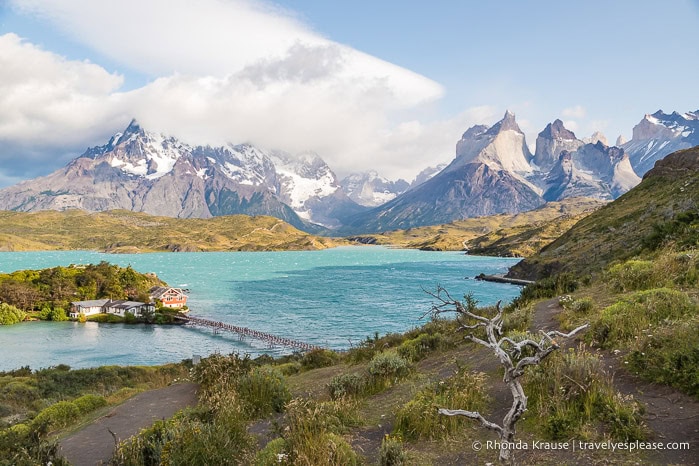
While it’s no secret how beautiful this part of Chile is, I was unsure how to best visit Torres del Paine as an independent traveller because the official website lacked clear and practical information for tourists. This meant I had to search blogs and consult other travellers for firsthand advice about planning a trip to Torres del Paine National Park.

After visiting Torres del Paine National Park, I decided to organize all the information I gathered during the planning phase of my trip, things I discovered while there, and tips I wish I had known before visiting into one handy Torres del Paine travel guide.

Torres del Paine Travel Guide- What to Expect When Visiting Torres del Paine National Park
Even though I knew a bit about what to expect when visiting Torres del Paine National Park, there were some surprises and challenges as an independent traveller.

The remote location, lack of certain services, and limited and expensive accommodation options are the main things that require consideration before visiting Torres del Paine National Park. The climate and potential for extreme weather are also something travellers need to come prepared for. Overall, Torres del Paine is not a place I would feel comfortable showing up and “winging it”, especially if I needed to make the most of a short trip.
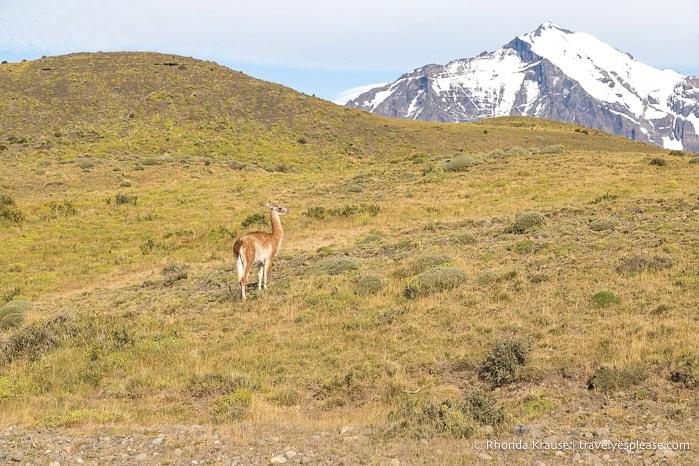
Here are some important things to know before visiting Torres del Paine National Park. I hope my Torres del Paine guide makes your trip planning easier and gives you a good idea of what to expect in this special, unforgettable place.

Location
Torres del Paine National Park is located in western Chile, in the Patagonia region, close to the Argentina border. The nearest city is Puerto Natales. The park’s south entrance (by the Serrano River) is approximately 83 km north of Puerto Natales and the Laguna Amarga entrance is 114 km north of the city.
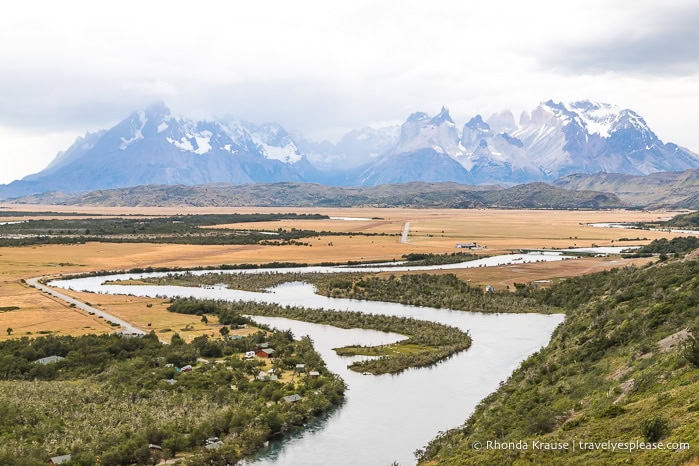
Getting There
The closest airports to Torres del Paine National Park are in Puerto Natales, Punta Arenas, and El Calafate (Argentina).
From Puerto Natales
To get to Torres del Paine by car from Puerto Natales, one option is to take Route 9 north then turn left onto Y-290 and follow that to the Serrano park entrance (on Google Maps it’s called Acceso Serrano Parque Torres del Paine). Another option is to stay on Route 9, turn left onto Y-150 then continue on Y-156 to get to the Laguna Amarga entrance.

If using public transportation, several bus companies have routes from Puerto Natales to Torres del Paine. The buses take about 2 hours to arrive at the Laguna Amarga entrance. Most buses make additional stops in the park including at Pudeto (where the Lago Pehoe ferry departs), Campsite Pehoe, the CONAF administration building, and Lago Grey. Bus Sur makes the most stops in the park (to all the places listed above).

From Punta Arenas
To drive from Punta Arenas to the Serrano entrance of the park takes between 4 and 4.5 hours. There’s no direct bus route into Torres del Paine National Park from Punta Arenas, so you will have to transfer in Puerto Natales. The bus ride from Punta Arenas to Puerto Natales takes about 3 hr 15 min.
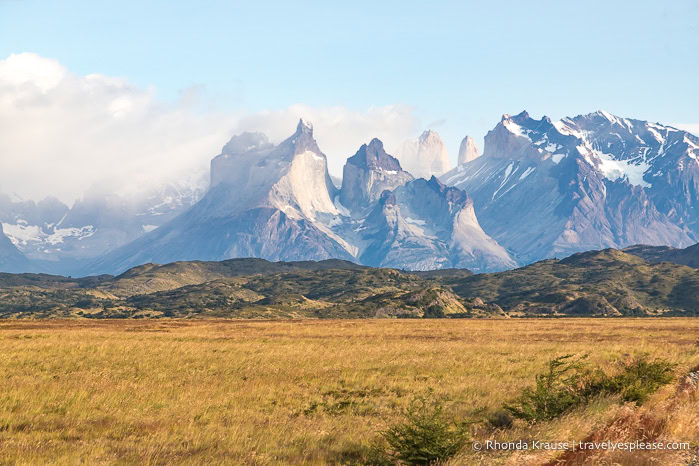
From El Calafate, Argentina
If you’re in El Calafate visiting Perito Moreno Glacier, you can drive to Torres del Paine National Park in about 4.5 hours (what I did). You could also take a 5 hour bus ride to Puerto Natales then another bus from there into the park.
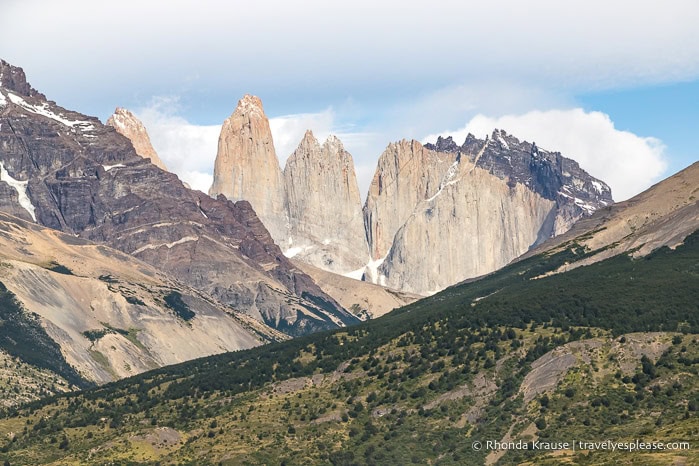
When driving from El Calafate, Google Maps may suggest a route that takes Highway 40 to RP 7, but this “shortcut” turns into a bumpy dirt road that almost nobody drives (I took it by accident on the return trip and didn’t see a soul). I suggest taking Highway 40 to Esperanza because it’s paved. From Esperanza, take Highway 40 west until you have to make a turn to get to the Paso Río Don Guillermo border crossing station. Fill up with gas in Esperanza because there are no gas stations beyond this point or in the park.
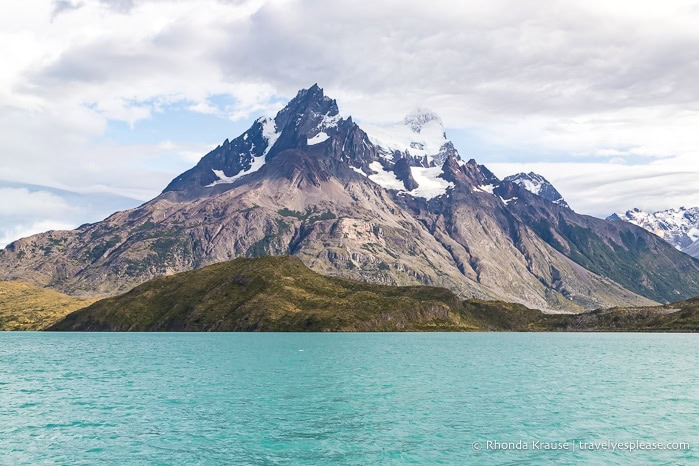
Best Time to Visit
The best time to visit Torres del Paine National Park is in summer (December to February) because of the warmer temperatures and long daylight hours. I visited during the last few days of January and even though it was high season, there weren’t huge crowds.

Entrance Fees
To enter Torres del Paine National Park you need to purchase a park pass. There are two validity periods- up to 3 days and more than 3 days. Prices are more expensive for foreign tourists.
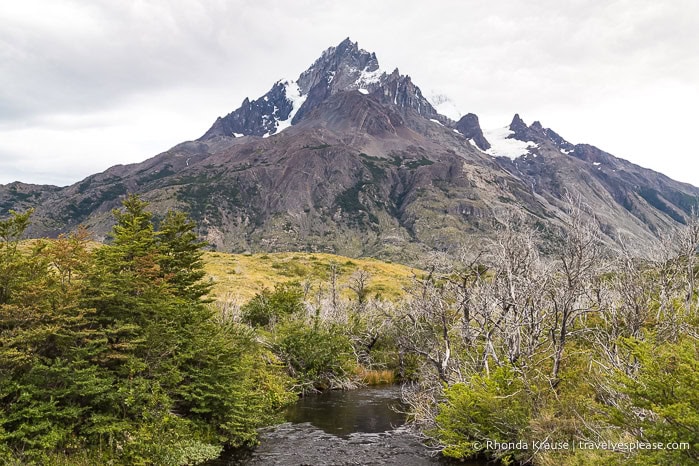
You must buy your park pass on the CONAF website in advance of your visit (you can no longer pay at the entrance gates). You will be emailed a document with a QR code that you can print or show on your phone to be scanned by staff at entrances to the park. You may also be asked to show your ID.

How Many Days to Spend
I recommend spending at least 3 full days in Torres del Paine National Park, especially if you are a hiker.
Some people make a day trip, which might be fine if you’re not into hiking, but for me, that would be such a tease because the park has so much to experience. With one day, you could only do one of the top hikes or drive around and sightsee, do a scenic boat trip, and perhaps hike a shorter trail.

I dedicated 3.5 days of my Patagonia itinerary to visiting Torres del Paine National Park so that I would have time to take a driving tour around the park before hiking the three most famous trails. Even with 3.5 days, there were still things I didn’t get to see and do. One more day for general sightseeing would have been perfect.
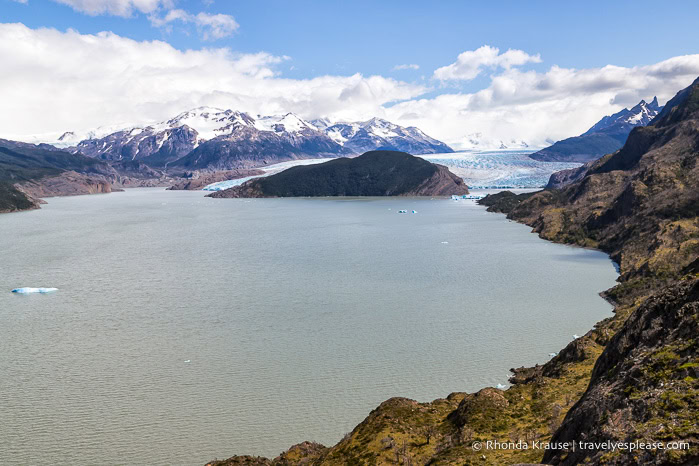
Getting Around
When planning a trip to Torres del Paine, one of the most important things to know is that there isn’t a comprehensive shuttle run by the park administration that will take you to all the main points of interest. The only shuttle goes back and forth between the Laguna Amarga entrance and the Welcome Centre at the start of the Mirador las Torres hike. This makes it easy for people who take the bus from Puerto Natales to get to the Mirador las Torres trailhead. The shuttle fee is paid in cash when boarding the bus.
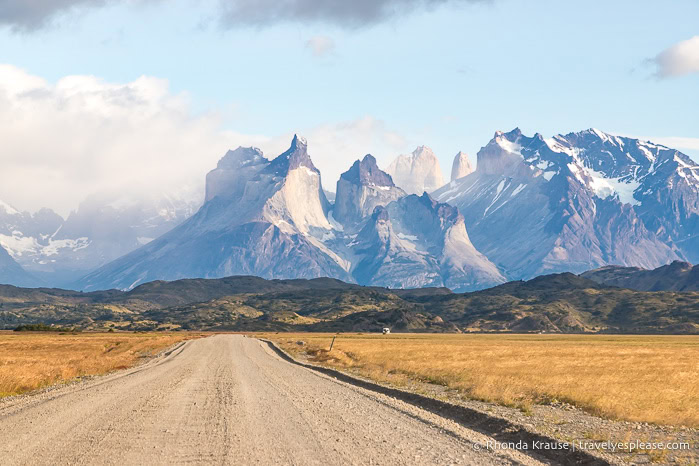
Other than the shuttle between Laguna Amarga and the Welcome Centre, the only other bus service in the park is provided by private companies. Bus Sur makes the most stops in the park including Pudeto/Lago Pehoe, Campsite Pehoe, the CONAF administration building, and Hotel Lago Grey.

It’s also important to note that there is no bus service from the Serrano village, just outside the park boundary, where a lot of accommodations are located. So if you’re staying here, as I did, you will need to have a car.

Without a doubt, the easiest and most convenient way to get around Torres del Paine National Park is by car. Without a car, you lose freedom and spontaneity because you’re limited by bus routes and schedules. You also can’t get early starts on the hikes when relying on bus transportation.

The only downside of having a car is that there is no gas station in the park and the nearest ones are hours away in Puerto Natales or Esperanza in Argentina. If you need fuel in Torres del Paine National Park, your accommodation may be able to sell you some (mine did), but you’ll pay a premium. I wouldn’t assume you’ll be able to find gas in the park.
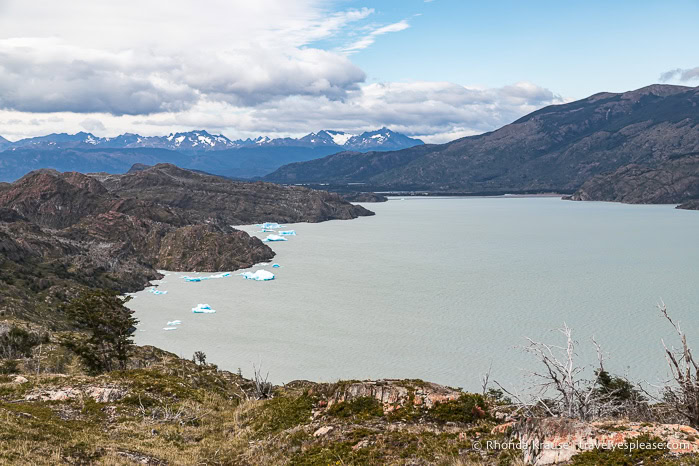
One final thing to know about getting around in Torres del Paine National Park is that the roads aren’t paved. Since the main gravel road through the park is quite bumpy in places, you have to drive slowly so getting from place to place takes longer than you might think. Having good car insurance for windshield and paint damage is also recommended.
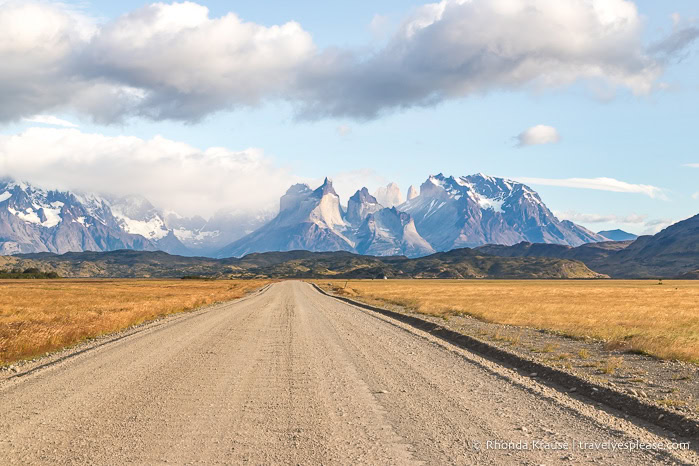
Things to Do
Almost all the things to do in Torres del Paine National Park involve being out in nature. Hiking is the top activity (both overnight treks and day hikes), but there is also a scenic boat cruise on Lago Grey to Grey Glacier, a catamaran trip across Lago Pehoe which offers great views of the Cuernos del Paine mountain, and several viewpoints for admiring the landscape.
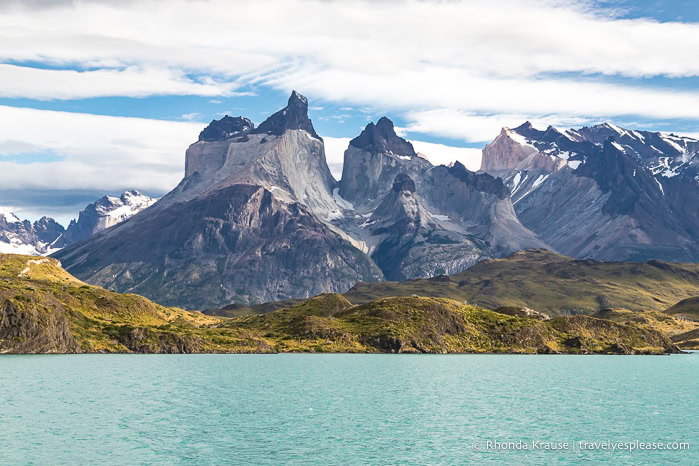
The park has some good wildlife viewing opportunities as well. You will likely see guanacos, one of the most common mammals in the park, but keep your eye out for pumas, foxes, the endangered South Andean deer, and birds of prey. My most exciting wildlife sighting was when a puma crossed right in front of my car as I was pulling out of the parking lot at Pudeto. I’m still sad I didn’t have my camera or phone handy to take a picture!
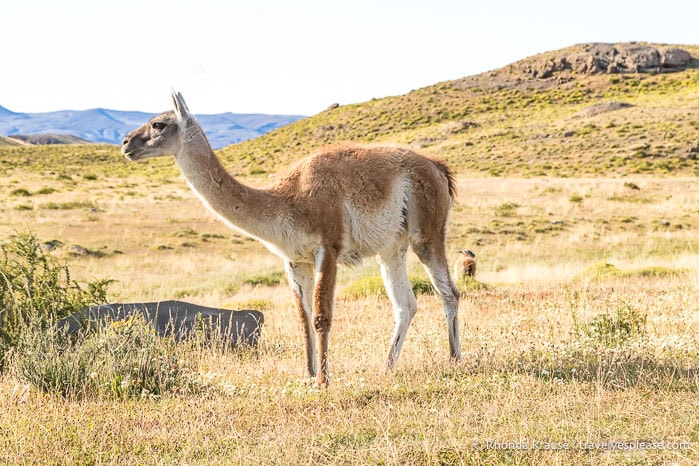
If relaxing and getting pampered in a scenic setting is more your style, there are some spa hotels in and just outside the park where you can unwind in a pool or sauna and get massages and other treatments.
Hikes
There are so many great hikes in Torres del Paine National Park including one or two hour walks to viewpoints, ambitious full day hikes, and multiday treks. The trails are easy to follow and well-signed with distance markers.

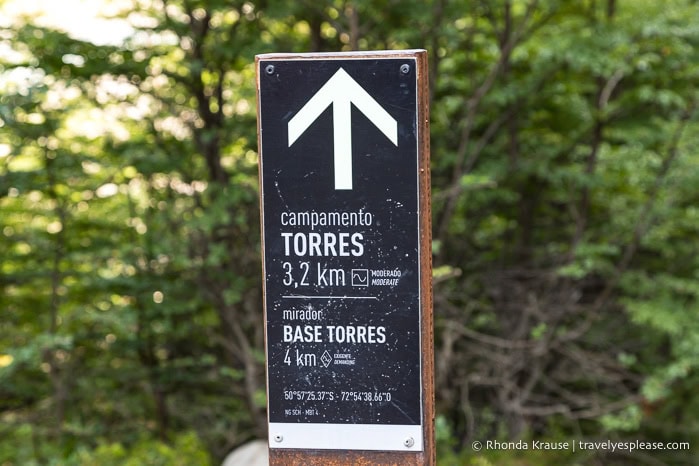
The most popular day hike is to Mirador las Torres, a viewpoint at the base of the iconic granite towers from which the park takes its name. Two other gorgeous day hikes are the French Valley hike to Mirador Frances across from the French Glacier and the Grey Glacier hike. All three of these hikes are between 18 and 23 km so they require some endurance.
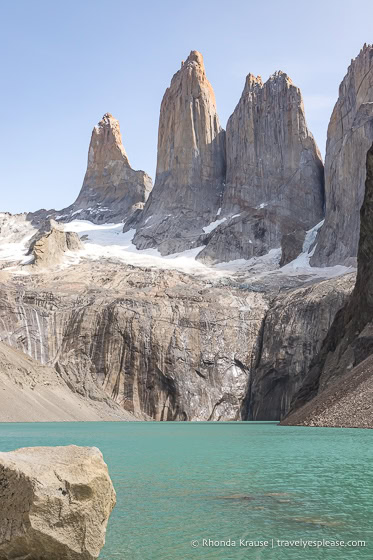
The park’s two multiday routes are the W Trek (3-5 days but I did the main parts of the W Trek as day trips) and the O Trek (7-9 days). On these routes there are campsites and refugios (shelters) where you can stay overnight, but you must make reservations before your hike. Bring proof of your reservations to show at the ranger checkpoints because you may not be allowed trail access without them.
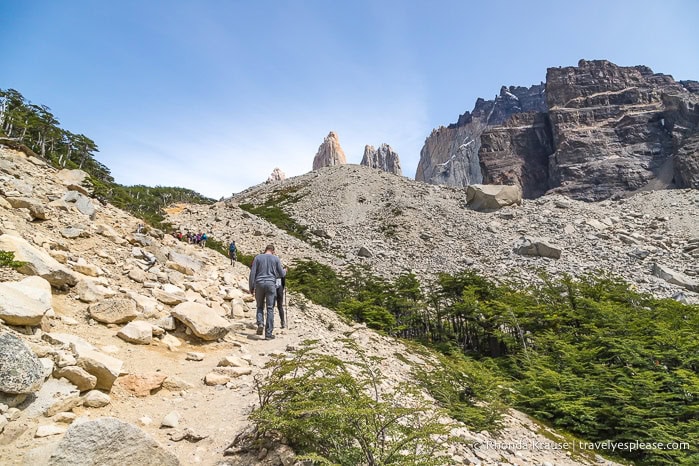
Accommodations
Torres del Paine National Park has a variety of accommodation styles ranging from backcountry campsites and dormitory-style shelters (refugios) to higher-end spa hotels.

Within the park boundary, there are only a few hotels to choose from so you’ll pay a premium for the location. The options are Hotel Explora, Hotel Lago Grey, Hosteria Pehoe, and Hotel Las Torres. Some of the hotels have a minimum stay of 2 to 4 nights during the summer season. More accommodations can be found just outside the park boundary at the Serrano tourist village, by the Serrano park entrance.

Many hotels have the option to book half-board (breakfast and dinner included) or full-board (breakfast, lunch, and dinner). Some hotels even have all-inclusive packages that include meals, drinks, and tours/activities.
For hikers, there are several campsites and refugios along the W and O routes. The refugios have dormitory rooms, shared bathrooms, hot showers, and a restaurant. Some are even equipped with a bar for drinks and a store for snacks and basic supplies. Many campsites are located next to a refugio so they share facilities, but some campsites aren’t so they’re more basic. Campsites also offer gear rentals (tents, sleeping bags, and mats). All refugios and campsites must be booked in advance.

I suggest booking your Torres del Paine accommodations several months in advance if you want the best selection for your desired price point. I booked 8 months in advance and couldn’t find a hotel room that I consider reasonably priced, so I ended up staying in a four-person dorm room that was still high priced for what it was. In general, I thought the accommodations in Torres del Paine were expensive and some were even outrageously priced ($11,000+ Canadian for three nights…no thanks, even if that’s all-inclusive!)
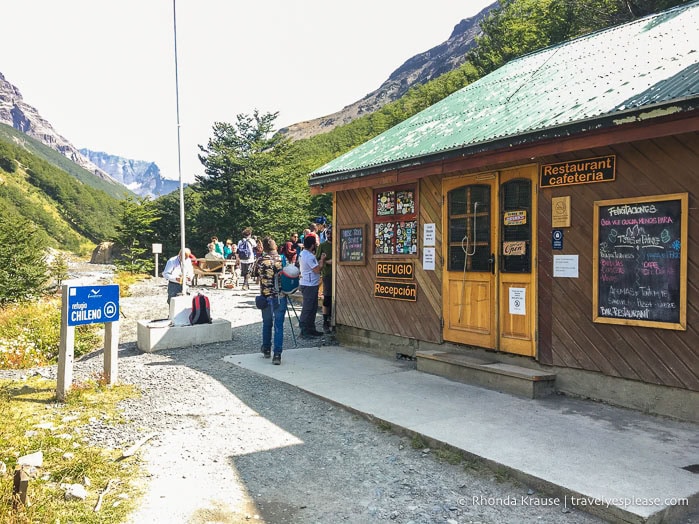
Services
Services in Torres del Paine National Park are limited. There is no gas station, no grocery store, no ATM or currency exchange, and no medical facilities. Several of the hotels have restaurants.
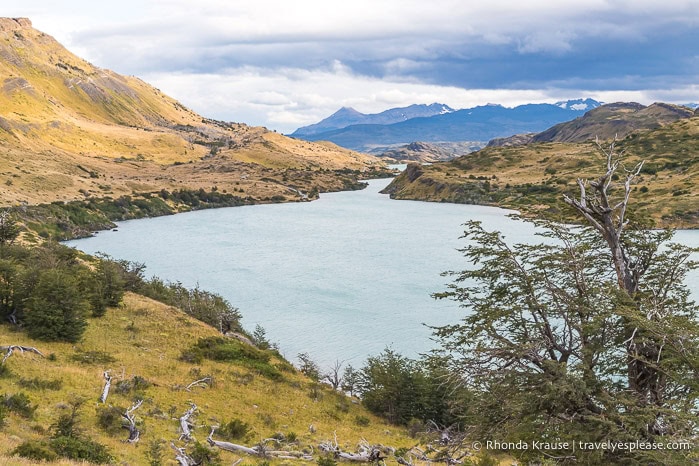
Weather
Temperatures in Torres del Paine typically range from 20°C in the summer to below 0°C in the winter. The weather can change quickly so it’s best to prepare for various conditions when heading out for the day.
The winds in Torres del Paine can be extreme and dangerous. I saw two RVs tipped over from the wind and witnessed a woman get blown off a hiking trail and down a rocky hill (I also was almost blown off my feet on that trail). These events happened the same day a ranger warned us to expect wind gusts of over 80 km/hr.

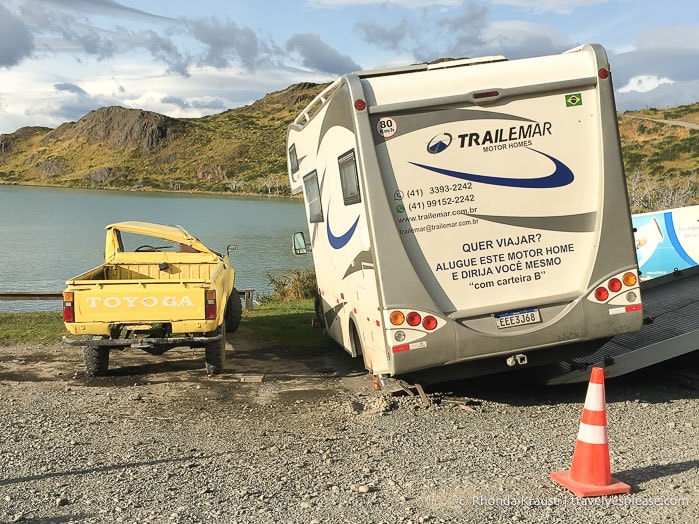
Map
Here is where you can download and print a map of Torres del Paine National Park.

Accommodations in Torres del Paine National Park
For your convenience, here is a list of hotels in Torres del Paine. Please consider booking your Torres del Paine accommodations through the included link. It costs nothing extra and helps support this website. Thank you!
Search, Compare and Book Trips to Torres del Paine
Here is a helpful and reputable site you can use to search for and compare tours of Torres del Paine National Park. There’s a variety of tour operators, travel styles, and itineraries all in one place for easy comparison. You can even read reviews from other travellers. Once you find a trip you love you can book it!
Tours and Activities in Torres del Paine
Here is another trusted site that has a large selection of tours and tickets for activities in Torres del Paine. You can book everything from day trips, private tours, guided hikes, and more.

More Chile Destinations and Travel Guides
- 4 Days in Easter Island- Itinerary for a Self-Guided Tour of Rapa Nui
- Rano Raraku- Carving Site of Easter Island’s Moai
- Orongo- Ceremonial Village of the Birdman Cult
- Walking Tour of Santiago- Photo Series
